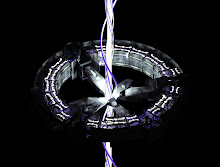A dojo (道場 dōjō) is a Japanese term which literally means "place of the way". Initially, dōjō were adjunct to temples. The term can refer to a formal training place for any of the Japanese do arts but typically it is considered the formal gathering place for students of any Japanese martial arts style to conduct training, examinations and other related encounters.
The concept of a dōjō as a martial arts training place is a Western concept; in Japan, any physical training facility, including professional wrestling schools, may be called dōjō depending on the context.
A proper Japanese martial arts dōjō is considered special and is well cared for by its users. Shoes are not worn in a dōjō. In many styles it is traditional to conduct a ritual cleaning of the dōjō at the end of each training session (called sōji, which translates from Japanese as "cleaning"). Besides the obvious hygienic benefits of regular cleaning it also serves to reinforce the fact that dōjō are supposed to be supported and managed by the student body, not the school's instructional staff. This attitude has become lost in many modern, commercial dōjō that are founded and run by a small group of people or instructors. In fact, it is not uncommon that in traditional schools (koryu), dōjō are rarely used for training at all, instead being reserved for more symbolic or formal occasions. The actual training is conducted typically outdoors or in a less formal area.
Many traditional dōjō follow a prescribed pattern with shomen ("front") and various entrances that are used based on student and instructor rank laid out precisely. Typically students will enter in the lower-left corner of the dōjō (in reference to the shomen) with instructors in the upper right corner. Shomen typically contains kamidana—an area for a Shintō shrine and other artifacts. The term kamiza is frequently confused by martial arts practitioners with the Kamidana. Many other artifacts may be displayed throughout the dōjō, such as kanban that authorize the school in a style or strategy, and items such as taiko drums or armor (yoroi). It is not uncommon to find the name of the dōjō and the dōjō kun (roughly "dōjō rules") displayed prominently at shomen as well. Visitors also typically have a special place reserved, depending on their rank and station. Weapons and other training gear will normally be found on the back wall.
A fine example of a traditional kendō dōjō is Noma dōjō in Tokyo.
A hombu dōjō or honbu dōjō of a style is considered the administrative and stylistic headquarters of a particular martial arts style or group. This does not necessarily mean that they are large or ostentatious.
Some well-known hombu dōjō located in Japan are:
Other names for training halls
Other names for training halls that are equivalent to "dojo" include the following:
- Dojang (taekwondo)
- Gelanggang (silat Melayu)
- Heya (sumo)
- Kalari (kalaripayat)
- Kwoon (wushu)
- Sasaran (pencak silat)

No comments:
Post a Comment